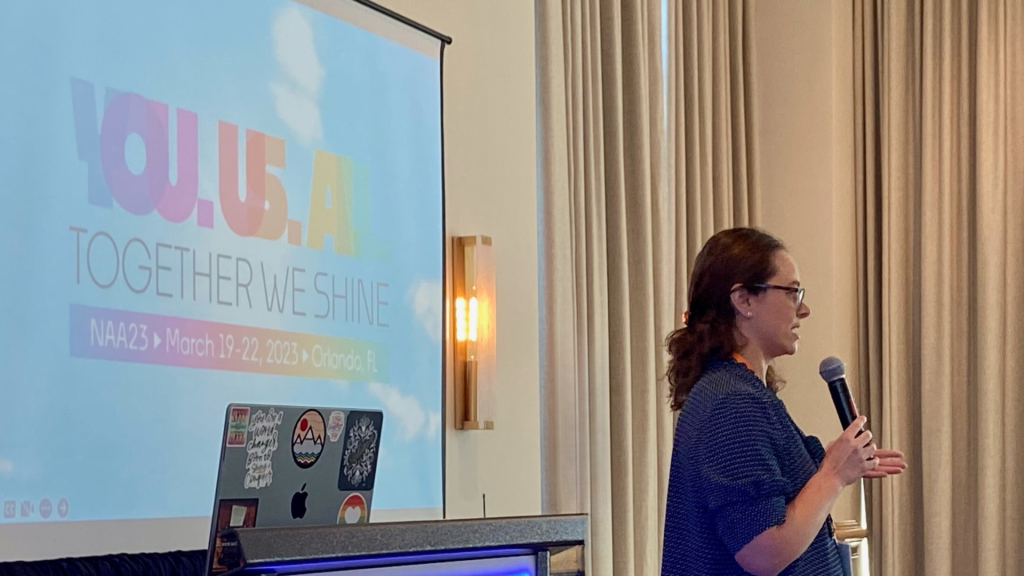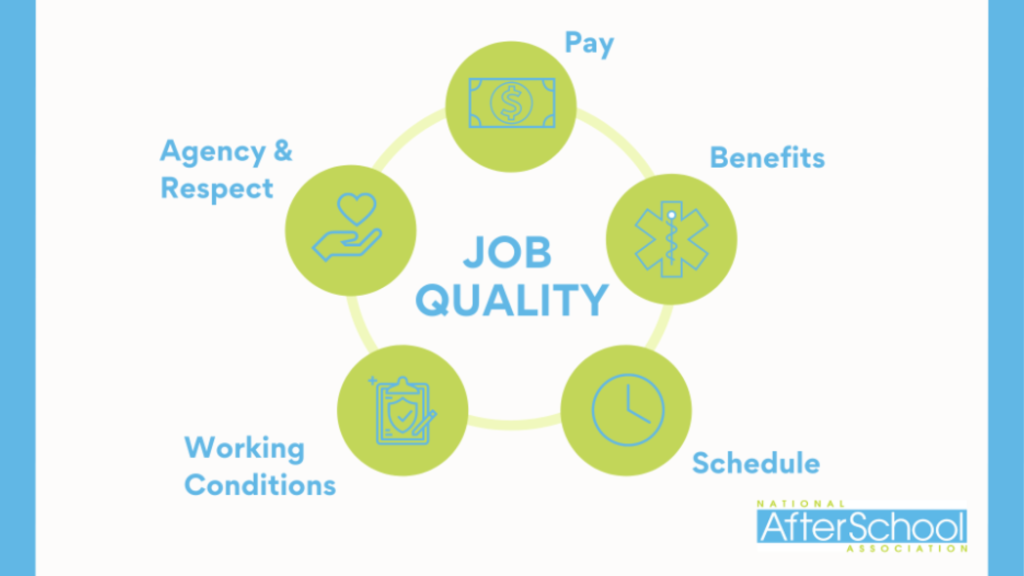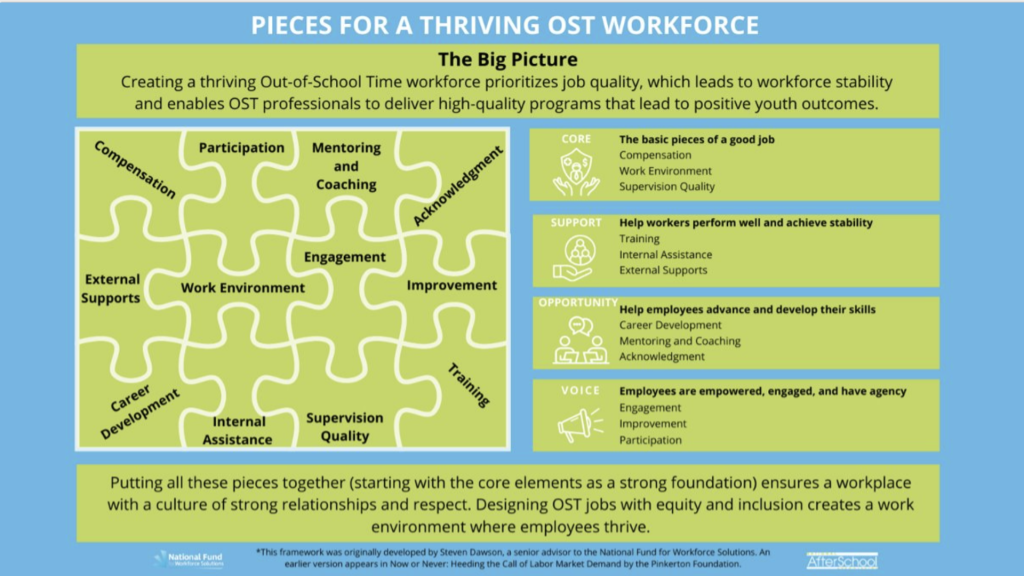
When I was little, I wanted to be a pediatrician who also wrote children’s books. I entered college planning to be a high school English teacher. Those were jobs I saw, could name, and that others had a shared understanding of. Instead, I’ve spent the last 23 years working in a field and in jobs that my husband has generally been unable to describe to others.
As my college experience continued, I decided teaching wasn’t the right path for me, but I had no idea what exactly it was I wanted to be doing. The summer between my junior and senior years of college I worked in a summer camp. That summer was amazing. I had coworkers I loved spending time with. My supervisors recognized the work I was doing regularly. Even in just a short summer I had opportunities to learn and grow. And I loved working with the kiddos. It was becoming clear to me that out-of-school time (OST) programming was the place for me.
But I had no clue what that meant for what came next after college. And it would be another two years before I fully understood that people could make careers of (not just have jobs in) the field.
I had the privilege of facilitating a two-day Thriving Workforce Stakeholder Summit at this year’s National Afterschool Association (NAA) Convention. I’ve been thinking a great deal about the deep conversations during the summit, but one thing keeps coming back to me. Many people in the room talked about the moment they realized the job they loved could be a career.

They realized that there are a wide range of organizations doing great work for kids with roles similar to (but likely named differently than) theirs. They learned about broader frameworks like positive youth development that connect and align us. They saw and identified opportunities for growth.
These epiphanies contained two critical elements. First, that we were already experiencing high job quality that made us want to continue. Second, our ability to visualize a career that we hadn’t previously imagined, as one might the more easily understood paths of a doctor or a teacher or even a writer.

In the fall issue of AfterSchool Today, NAA COO Heidi Ham wrote, “I’ve often heard that our field needs professionalizing. I view all who work in OST as professionals, so I’m curious about what people mean when they comment about professionalization…I’ve learned that being identified as a ‘profession’ is a social construct with vague definitions that reinforce racism, sexism, and classism.” It is for this reason that we cannot let others define us as a profession, but instead must work together collectively to shape and define what it means to be a thriving workforce in this field.
Out-of-schooltime intermediaries will be a critical ally. Intermediaries were first created nearly 30 years ago to begin tackling and supporting this effort. At the state and local levels, they will continue to have an important role to play in creating the conditions and systems for a thriving workforce and helping people visualize the possibilities of a field. And yet more is needed to fully galvanize our profession.

NAA has taken on the charge of leading this work to “define the components of a strong and knowledgeable workforce” and promote workforce advocacy. The Thriving Workforce Framework is a critical tool in doing both.
All of us who had that moment and chose this career also have a role to play. How can you help change the social construct that limits OST work being seen as a profession and the people who do this work as professionals? What successes have you had recently in supporting job quality or a thriving OST workforce?










No comment yet, add your voice below!